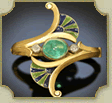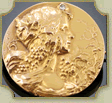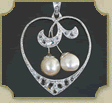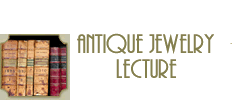antique-jewelry-lecture-laws
Antique jewelry: laws and regulations

Around 1800 Napoleon abolished the guilds and left the regulations of gold and silverware to the legislator.
What was the role of the guilds?
The guilds guaranteed the integrity of the concerned trades. They appointed assay-masters to control the objects made of precious metals checking if the right alloy was used. Actually what they did was not so bad, the legislator later adopted most of their rules in his laws, so in fact, today, we are still working according to the same principles.
To what conditions does an object made out a precious metal have to comply with?
This depends from the country where it is made, where it was made for, or where it is located. To make a long story short: "it needs a (hall-)mark". However finding a mark in a piece doesn't always give you the guarantee that the object really is what the mark claims it is. If there would be a goldmark in a piece of iron claiming it to be gold, not many people would believe it; but a goldmark in a piece of brass would be a lot more difficult for most people to refute. From this we learn that just a mark won't do. Marks have to comply with certain rules. These rules are different from country to country as well as from period to period.








